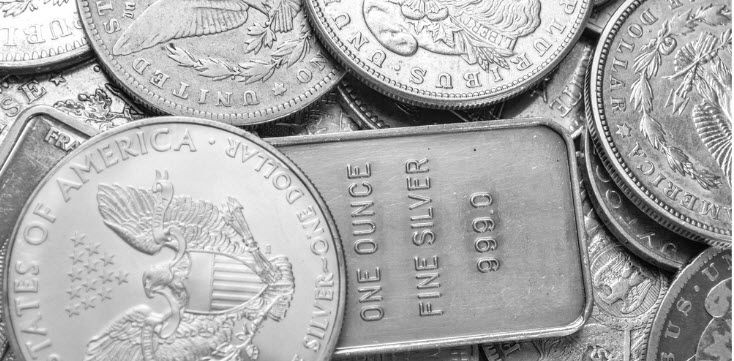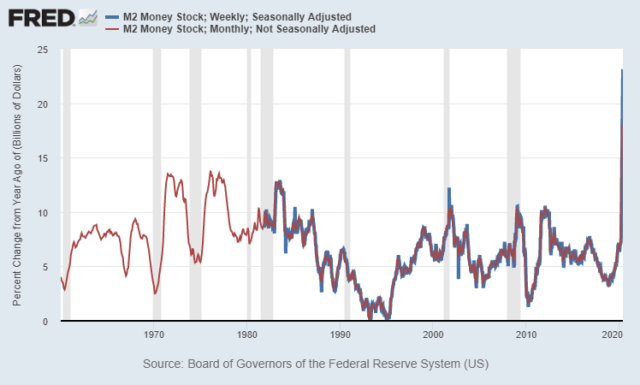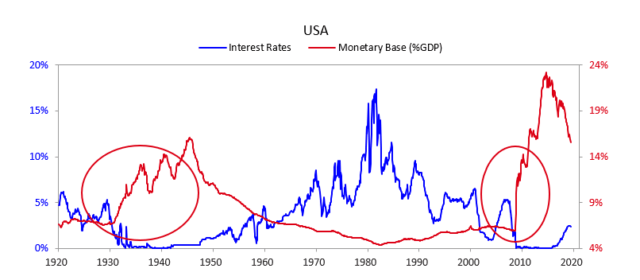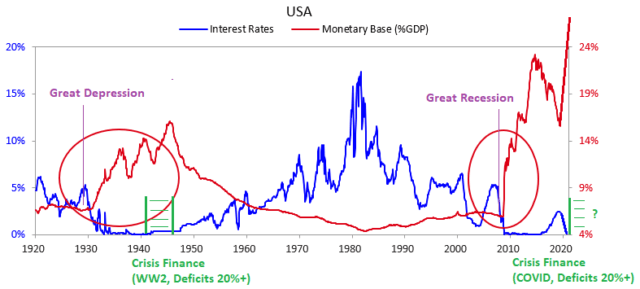Silver Price Forecast: 2020’s An Ideal Long-Term Environment

The 2020’s are shaping up to be a great period for silver.
Before diving into why, it’s worth reminding about a key difference between gold and silver.
Gold is mostly a monetary metal, with the vast majority of its usage going to bullion and jewelry rather than industry. Silver is roughly half monetary metal and half commodity metal, with its consumption about equally split between its industrial usage and its bullion/jewelry usage. That makes silver demand more pro-cyclical, meaning it can have softer demand from industrial consumption during recessions. Silver is also primarily a mining byproduct of other metals, so most of its production isn’t tied directly to supply/demand of silver itself. Therefore, silver tends to have very wild volatility.
However, this also makes it a more reflationary metal, meaning one that tends to do well on the recovery side of a recession when fiscal and monetary stimulus are pouring out into the economy.
Gold to Silver Ratio
If we look at the gold-to-silver ratio over the past three decades, it has increased during all four recessions in the period:
Gold to Silver Ratio
Chart Source: Macrotrends
During the early 1990’s recession, the early 2000’s recession, and the 2008 recession, the gold-to-silver ratio went up. The same happened during this early 2020 pandemic shutdown, although this hasn’t been officially marked as a recession yet, so it doesn’t have the shaded gray area yet. Nonetheless, it clearly is a recession, which makes it the fourth one in the sample period for the purposes of this article.
After each recession, or during the later stages of it, silver starts to outperform gold, so the ratio decreases.
Although both gold and silver often briefly sell off during the initial liquidity-driven phase of a bear market, gold tends to hold up better and recover first, due to its safe-haven status. Silver, due to its hybrid monetary/industrial status, doesn’t get the same safety trade that gold gets.
However, on the recovery side of the recession, when the economy is in rough shape but starting to improve in rate-of-change terms, and the government is deploying fiscal stimulus into the economy and the central bank has cut interest rates and is expanding the monetary base, silver historically starts to shine.
We’ve recently seen a very sharp downside reversal in the gold-to-silver ratio, improvement in several liquidity measures, and a new downtrend in the dollar, so at the moment it appears that financial markets are past the worst of the liquidity problems that they faced earlier this year, and are onto the solvency problems which will last a while longer. This should be good for precious metals.
U.S. broad money supply is increasing at the fastest year-over-year percent rate in modern history:
Chart Source: St. Louis Fed
Comparing the Current Environment
A chart that I’ve been very interested in lately is one that Bridgewater Associates put together back in mid-2019, which showed the similarity in monetary policy between the 1930’s (post Great Depression) and the 2010’s (post Great Recession):
Chart Source: Bridgewater Associates
I wanted a version to reflect new data as of late May 2020, so I made an updated/annotated version of that chart with the latest data:
Chart Source: Bridgewater Associates, Updated/Annotated by Lyn Alden
The 1930’s (starting a bit earlier in 1929) began with a collapse of a private debt bubble and were characterized by a disinflationary environment, a bank crisis, and major money-printing. The gold-to-silver ratio increased from about 40x at the start of the decade to almost 100x by the end of the decade.
The 1940’s was the period of World War II, so federal deficits reached massive levels and federal debt went to record heights as a percentage of GDP, and the decade was rather inflationary, with brief spikes into double-digit inflation. The gold-to-silver ratio decreased from almost 100x at the start of the decade to under 50x by the end of the decade.
Similarly, the 2010’s (starting a bit earlier in 2008) started with a collapse of a private debt bubble and were characterized by a disinflationary environment, a bank crisis, and major money-printing. The gold-to-silver ratio increased from being in the 60’s to well into the 90’s by 2019, and then briefly hit a record high of about 120x in early 2020.
So far, the 2020’s have federal deficits and debts that rival those of the 1940’s war era, except with military spending replaced with pandemic spending. Both periods had an increase in the monetary base as the Federal Reserve monetized those debts with new dollar creation. This could very well end up triggering noticeable price inflation as we go deeper into the decade. The gold-to-silver ratio started with a peak as high as 120x early this year, is now back into the low-90’s, and has a high probability of going significantly lower as we move deeper into the years ahead.
Back in the 1940’s, policymakers dealt with high federal debt levels by using yield curve control. The Federal Reserved printed dollars to buy Treasury bonds in order to lock their yields at 2.5% below, even as inflation spiked into the double digits in certain years during the decade. The result was that Treasuries across the yield curve greatly underperformed the consumer price index, so a significant portion of the federal debt as a percentage of GDP was inflated away in real terms.
Will the Price of Silver Double in the 2020’s?
Lately, Federal Reserve officials began discussing the prospect for ongoing yield curve control in the 2020’s, both in their FOMC minutes and in public discussions. So in many ways, the 2020’s are shaping up to be a lot like the 1940’s in terms of very aggressive fiscal spending that is funded by debt monetization and financial repressed via yield curve control as needed.
In the 1940’s, the price of silver more than doubled during the decade, and I wouldn’t be surprised to see similar or better performance in the 2020’s.
You can read more insights from Lyn @ Lyn Alden Investment Strategy.
*********






















